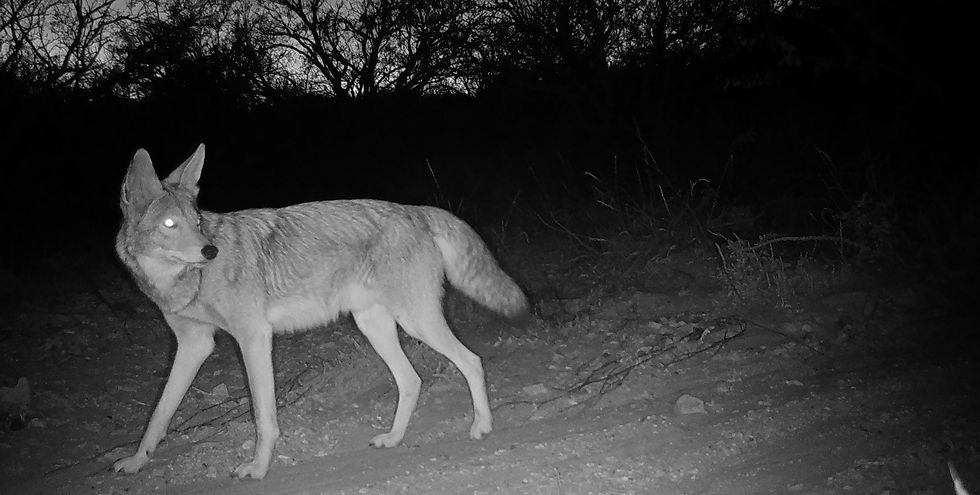The Wonder of Bats
- Cholla Rose Duir
- Sep 19, 2022
- 3 min read
Updated: Nov 20, 2023
In the northern hemisphere October holds space for holidays that touch on the mysterious aspects of our world, such as the afterlife, monsters, and even bats. It also happens to be Bat Appreciation Month. According to Oxford languages, “wonder” is defined as the feeling of surprise mingled with admiration caused by something beautiful, unexpected, unfamiliar, or inexplicable. Wonder is my favorite feeling and has always drawn me to learn more about subjects like UFO’s, vampires, and of course, my favorite topic, animals. The bat is among the most wondrous animals with over 1400 species worldwide from tiny to large, from insect eating to nectar feeding.
The Kitti's hog-nosed bat, Craseonycteris thonglongyai, also known as the bumble bee bat, is the world's smallest bat found in western Thailand. These tiny bats weigh around two grams for comparison, the same weight as a dime or single cashew. They are believed to be the smallest known mammal in length. There are few known populations of this bat, and as such, there is limited information on them, but they are thought to be threatened by mining and habitat loss.

If a flying mammal the size of a bumble bee didn't bring you a sense of wonder, maybe the tube-lipped nectar bat, Anoura fistulate, of Ecuador will! This bat has the longest tongue-to-body ratio of any known mammal. The tube-lipped nectar bat's tongue is 1.5 times the length of its body! This nectar-feeding bat evolved to drink nectar from a trumpet-shaped flower called Centropogon nigricans. Most mammals store their tongue in their mouths, but this fantastic bat needs a little more room and stores its tongue in a unique sleeve of tissue extending to the heart and sternum.

Here in Arizona we have over 30 species of bats, including a bat who holds not just one but two awe-inspiring records, the Mexican free-tailed bat, Tadarida brasiliensis. This bat is known to be the fastest mammal on Earth. In level flight, they can hit speeds of 99 miles per hour! If that wasn't enough, the Mexican free-tailed bat colony in Texas's Bracken Cave numbers over 15 million individuals, the largest known bat colony and the largest concentration of mammals on earth. Mexican free-tailed bats migrate from Mexico to Arizona from approximately May through October, and viewing sites can be found on the AZGFD website.

Bats may be scary to some, but I prefer to be awestruck with wonder instead. These amazing creatures reproduce only once annually, making them very susceptible to decline from habitat loss and disease. More than half of the bat species found in the U.S. are in decline or endangered. You can help bats by planting native vegetation around your home, eliminating the use of pesticides, and turning off unnecessary outdoor lights. Additionally, you can spread the wonder and dispel myths about bats and support organizations helping to conserve wildlife habitats.
Borderlands Restoration Network works to support the nectar-feeding bats Mexican long-tongued bat, Choeronycteris Mexicana, and Lesser long-nosed bat, Leptonycteris yerbabuenae, across the borderlands on both sides of the border through our partnership with Bat Conservation International and our agaves for bats project through Borderlands Nursery & Seed. These efforts work to restore agaves that are an important food source for these once endangered migrating bats that rely on the flowering agaves along their travels. To date, BN&S has planted 4,124, and counting, agaves across the borderlands with 1,350 located within the Borderlands Wildlife Preserve. These charismatic bats are the reason your hummingbird feeders mysteriously drain overnight during September and October!
Bats at a hummingbird feeder in Southeastern Arizona.
Look out for more fun bat posts on the Borderlands Wildlife Preserve social media site this month, and happy fall!





Comments